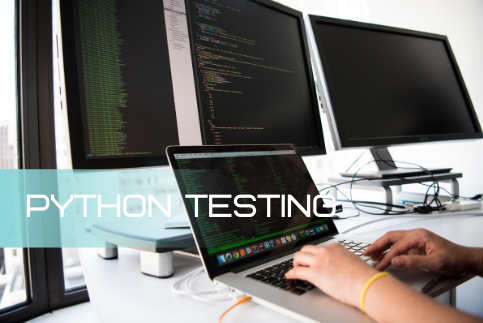Top Python Interview Questions
by Venkatesan M on Sep 20, 2019 10:51:35 AM


Are you trying for a Python job? Here are the top frequently asked interview questions and answers to step-on the python interview. Dive into these Python interview questions and answers and see just how well-versed you are in this Python language.
Q1. What is the maximum possible length of an identifier?
a) 31 characters
b) 63 characters
c) 79 characters
d) none of the mentioned
Answer: d
Explanation: Identifiers can be of any length.
Q2. Why are local variable names beginning with an underscore discouraged?
a) they are used to indicate a private variable of a class
b) they confuse the interpreter
c) they are used to indicate global variables
d) they slow down execution
Answer: a
Explanation: As Python has no concept of private variables, leading underscores are used to indicate variables that must not be accessed from outside the class.
Q3. What is the output of print 0.1 + 0.2 == 0.3?
a) True
b) False
c) Machine dependent
d) Error
Answer: b
Explanation: Neither of 0.1, 0.2 and 0.3 can be represented accurately in binary. The round off errors from 0.1 and 0.2 accumulate and hence there is a difference of 5.5511e-17 between (0.1 + 0.2) and 0.3
Q4. What is the result of round(0.5) – round(-0.5)?
a) 1.0
b) 2.0
c) 0.0
d) None of the mentioned
Answer: b
Explanation: Python rounds off numbers away from 0 when the number to be rounded off is exactly halfway through. round(0.5) is 1 and round(-0.5) is -1.
Q5. What is the output of the following expression if x=456?
print("%-06d"%x)
a) 000456
b) 456000
c) 456
d) error
Answer: c
Explanation: The expression shown above results in the output 456.
Q6. What is the output of the following?
i = 0
while i < 3:
print(i)
i += 1
else:
print(0)
a) 0 1 2 3 0
b) 0 1 2 0
c) 0 1 2
c) error
Answer: b
Explanation: The else part is executed when the condition in the while statement is false
Q7. What is the output of the following?
x = "abcdef"
i = "a"
while i in x[:-1]:
print(i, end = " ")
a) a a a a a
b) a a a a a a
c) a a a a a a …
d) a
Explanation: String x is not being altered and i is in x[:-1].
Q8. What is the output of the following?
print('ab12'.isalnum())
a) True
b) False
c) None
d) Error
Answer: a
Explanation: The string has only letters and digits.
Q9. Suppose listExample is [3, 4, 5, 20, 5, 25, 1, 3], what is list1 after list example.pop()?
a) [3, 4, 5, 20, 5, 25, 1].
b) [1, 3, 3, 4, 5, 5, 20, 25].
c) [3, 5, 20, 5, 25, 1, 3].
d) [1, 3, 4, 5, 20, 5, 25].
Answer: a
Explanation: pop() by default will remove the last element.
Q10. What is the output of the code shown below?
l1=[1,2,3]
l2=[4,5,6]
[x*y for x in l1 for y in l2]
a) [4, 8, 12, 5, 10, 15, 6, 12, 18]
b) [4, 10, 18]
c) [4, 5, 6, 8, 10, 12, 12, 15, 18]
d) [18, 12, 6, 15, 10, 5, 12, 8, 4]
Answer: c
Explanation: The code is shown above returns x*y, where x belongs to the list l1 and y belongs to the list l2. Therefore, the output is: [4, 5, 6, 8, 10, 12, 12, 15, 18].
Q11. Which of the following statements create a dictionary?
a) d = {}
b) d = {“john”:40, “peter”:45}
c) d = {40:”john”, 45:”peter”}
d) All of the mentioned
Answer: d
Explanation: Dictionaries are created by specifying keys and values.
Q12. What is the output of the below program?
lamb = lambda x: x ** 3
print(lamb(5))
a) 15
b) 555
c) 125
d) None of the mentioned
Answer: c
Q13. What is the value returned by Math.floor(3.4)?
a) 3
b) 4
c) 4.0
d) 3.0
Answer: a
Explanation: The floor function returns the biggest number that is smaller than or equal to the number itself.
Q14. What is the output of the code shown below?
l=[2, 3, [4, 5]]
l2=l.copy()
l2[0]=88
l
l2
a) [88, 2, 3, [4, 5]]
[88, 2, 3, [4, 5]]
b) [2, 3, [4, 5]]
[88, 2, 3, [4, 5]]
c) [88, 2, 3, [4, 5]]
[2, 3, [4, 5]]
d) [2, 3, [4, 5]]
[2, 3, [4, 5]]
Answer: b
Explanation: The code shown above depicts a deep copy. In a deep copy, the base address of the objects is not copied. Hence the modification done on one list does not affect the other list.
Related Interview Questions...
- Python Flask Interview Questions and Answers
- Python Pandas Interview Questions and Answers
- Python Real Time Interview Questions and Answers
- Python Testing Interview Questions and Answers
- Automation Testing Python Interview Questions
- Data Science in Python Interview Questions and Answers
- Top 25 Python Interview Questions and Answers Prepared by Experts
You May Also Like
These Related Stories

Python Testing Interview Questions and Answers

Python Flask Interview Questions and Answers


.jpg?width=555&name=Ads%20(1).jpg)

No Comments Yet
Let us know what you think